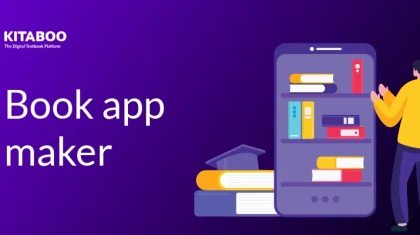
Ensuring Accessibility in Religion Publishing: The Role of KITABOO’s Multilingual Support
Summarize this blog with your favorite AI:
Religious texts have the power to inspire, guide, and unite people across the globe. However, language obstacles frequently limit their full impact, making it difficult for many people to properly connect with these profound ideas. It is more important than ever to make sure that religious publications are available in different languages in a world where accessibility and diversity are becoming core principles.
Multilingual support has become a key component of contemporary religious publishing as publishers work to make sacred content accessible to a wide range of consumers.
In addition to discussing the need of transcending linguistic barriers, this article demonstrates how online publishing platforms such as KITABOO can assist publishers in reaching a larger audience while maintaining inclusivity and cultural sensitivity.
Table of Contents:
I. The Importance of Accessibility in Religion Publishing
II. Challenges in Achieving Multilingual Accessibility
- Not Understanding the Importance of Cultural Sensitivity and Accuracy
- Finding Qualified Translators
- Ensuring Consistency Across Translations
III. The Role of Technology in Enhancing Accessibility
IV. KITABOO’s Contribution to Multilingual Accessibility
- Supporting Multiple Languages and Formats
- Facilitating the Creation and Distribution of Multilingual Content
- Enhancing User Experience for Diverse Audiences
V. Wrapping Up
The Importance of Accessibility in Religion Publishing
The accessibility of religion publishing goes beyond just convenience. Making religious books and literature accessible in all languages is crucial for promoting equity and fairness. This ensures that the profound messages of faith can reach a broader audience, transcending linguistic barriers.
Multilingual support helps promote inclusivity, deep understanding, and appreciation of different religious perspectives. The ability to read sacred texts and teachings in one’s native language enables people to connect with the underlying messages on a deeper, more personal level. This results in a sense of belonging and strengthens the individual’s spiritual journey.
Multilingual accessibility also allows for a richer and more nuanced understanding of religious traditions. The encounter with different translations and interpretations helps people appreciate the diversity and richness of religious thought. This interfaith dialogue leads to mutual respect and understanding, contributing to a more harmonious and inclusive society.
Challenges in Achieving Multilingual Accessibility
While multilingual accessibility is essential in religion publishing, achieving it requires thoughtful planning and specialized expertise.
Here are some common challenges:
1. Not Understanding the Importance of Cultural Sensitivity and Accuracy
- Religious texts involve deep insight into source and target languages. They contain words and phrases that induce and elaborate on deep nuances of meaning, cultural allusions, and intricate theological concepts that might be tricky in another language.
- Research has shown that religious leaders think accurate and culturally sensitive translation is important in effective religious education.
- Inaccurate translations are prone to misinterpretation, misrepresentation, or even unintended offense, which might undermine the message intended and thus cause harm.
2. Finding Qualified Translators
Qualified translators with extensive knowledge of religious and cultural settings and specialization in both source and destination languages are hard to come by:
In addition to being proficient in both languages, translators need to possess a sophisticated comprehension of the source text’s historical, cultural, and religious facets.
This calls for specific knowledge and experience that might not be available.
3. Ensuring Consistency Across Translations
Keeping all these translations uniform and similar is what maintains the religion’s integrity of the message. In the case of multiple translations, inconsistencies may confuse the reader and detract from the overall message:
- Establishing and adhering to clear translation guidelines and style guides can help ensure consistency across all translations.
- Moreover, making use of translation management systems and using a team of experienced translators can also help in streamlining the translation process and achieving consistency.
- This calls for multiple approaches to it, including giving priority to the accuracy, sensitivity to culture, and quality during the translation processes.
The Role of Technology in Enhancing Accessibility
Here’s a snapshot of how technology enhances accessibility:
1. Overcoming Language Barriers through Technology
Technology helps publishers improve the quality of their translations, streamline the translation process, and make their material more accessible to a wider audience.
- Machine translation technologies can be useful in the early phases of the translation process by offering draft translations and pointing out possible issues, but they cannot take the place of human translators.
- When working on several translation projects, translation memory systems maintain a database of previously translated words and passages to guarantee consistency and boost productivity.
- Text-to-Speech and Speech-to-Text Technologies: Through various presentation formats, these texts can be accessed by those who are blind or hard of hearing.
2. Benefits of Digital Publishing Platforms
- Digital publishing platforms offer a variety of features that improve accessibility.
- With KITABOO, publishers can easily create and manage multiple language versions of their publications.
- They usually feature language selection, text-to-speech functionality, and support for multiple file types and thus present the content to a wider audience.
KITABOO's Contribution to Multilingual Accessibility
KITABOO has a significant role in making religion publishing more accessible by offering a strong and user-friendly platform for creating and distributing multilingual content.
The digital textbook platform offers various features that facilitate the creation of accessible content:
- It supports multiple languages, making it easy for publishers to create and manage different language versions of their publications on one platform.
- Language translation tools could be implemented in the platform, thus facilitating the translation and maintaining consistency throughout different versions in other languages.
- The platform supports a number of file formats. It would enable publishers to create and distribute content in several accessible formats like audio, video, and ePub.
By using the capabilities that lie within KITABOO’s platform, publishers can streamline the ways in which multilingual content is created and distributed to reach a wider audience. It leads to creating a nice resonance effect with individuals from diverse linguistic and cultural backgrounds.
Wrapping Up
By adopting multilingual assistance and utilizing cutting-edge technology such as KITABOO, publishers may break down barriers to language, promote intercultural understanding, and reach a worldwide audience with religious teachings.
Request a demo today to explore how our solutions can help you create and distribute multilingual publications that are both accessible and impactful.
Also Check:
Discover how a mobile-first training platform can help your organization.
KITABOO is a cloud-based platform to create, deliver & track mobile-first interactive training content.



